Singapore Sling
The island-state hosts some of Australia’s best restaurants, with several Michelin stars and 50 Best listings between them.
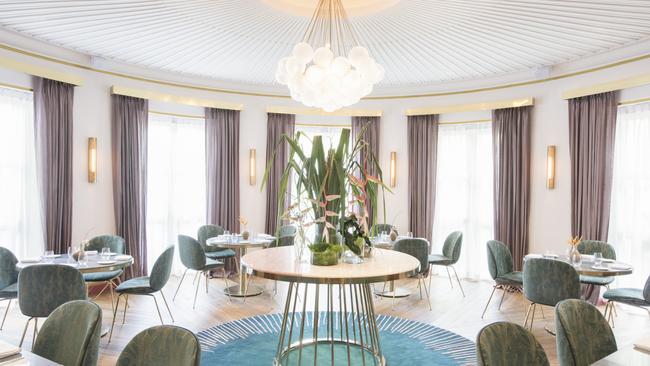
In Singapore, locals into the restaurant scene — and eating out in Singapore is a pursuit second only to shopping — talk about the new “thing”. Australian contemporary. It’s a culinary category, like modern Japanese or new Nordic
As in: “Australian contemporary is really popular here in Singapore right now,” which is what a local actually said to me my first night in Singapore.
And there’s no disputing it.
At all levels — from the grand hotels to the little standalone restaurants — Australians have played an important role in Singapore’s hospitality industry over the past 10 years. Indeed, Australians such as Soren Lascelles and Lucas Glanville, to name just two, occupy senior positions within the ranks of food and beverage management in the local hotel industry.
There are many more. And in more than a few restaurants, including Michelin-starred places such as Bacchanalia where Perth-raised Luke Armstrong heads the kitchen, the haute Japanese temple of Waku Ghin operated by Aussie Tetsuya Wakuda, or Bistro November with John-Paul Fiechtner, you’ll find Australian chefs. Such examples are easy.
But in recent years something more definitive has emerged: the opportunity for Australian chefs to ply more than their trade and actually shape the restaurants they work in to reflect an Australian ethos and background.
It’s been coupled with entrepreneurs prepared to back Australian chefs to do in Singapore what they might have done at home.
Just cut loose.
That could mean Australian ingredients or cooking techniques, the wines on sale or menu structure. It could extend to a certain kind of front-of house manner and service culture, with Australian staff on the floor. Open kitchens. Limited reservations availability. An “unstitched” mood.
Usually, it’s a cocktail of all of it that goes into the phenomenon that is Australian contemporary.
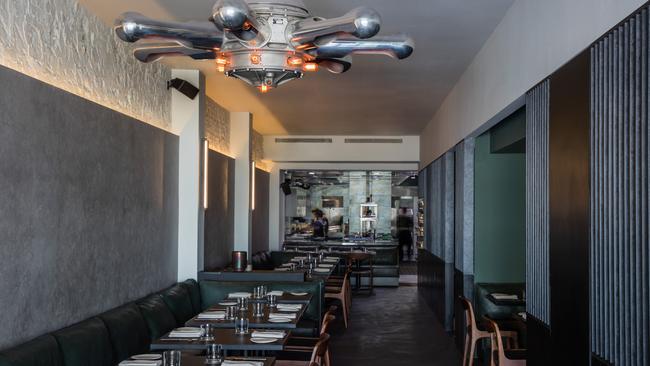
A quick look at the 2017 Michelin Guide confirms the existence of a bona fide movement. Awarded one star were three restaurants categorised by the guide as “Australian contemporary”: Whitegrass, Osia and Cheek by Jowl. Arguably, another relative newcomer, Blackwattle, might have been among them were it not so new, although privately the chefs behind each venture might say they are less concerned by Michelin than the alternative World’s 50 Best rankings. Among chefs Rishi Naleendra (Cheek) Sam Aisbett (Whitegrass) and Clayton Wells (Blackwattle), the more powerful recognition is almost certainly the controversial but influential lists World’s 50 and Asia’s 50 Best.
And in the strange dichotomy that exists between the two restaurant ranking systems, it is the unstarred Burnt Ends that paved the way in Singapore for the new breed of Australian contemporary.
The tyre guys may not rate this little Chinatown barbecue joint helmed by West Australian chef Dave Pynt (he’s involved behind the scenes in several other places, including Meat Smith) but in the World’s 50, and indeed Asia’s 50, Burnt has had exceptional recognition, reaching 53 in the former and 10 in the latter for 2017.
It all leads to the rather odd conclusion that some of Australia’s best restaurants are actually in Singapore.
Clayton Wells, of Sydney’s acclaimed Automata, opened Blackwattle — similar in pitch — in partnership with local businessman Peng Loh’s Unlisted Collection in October 2017. Loh is Wells’s landlord and partner in Sydney too, at The Old Clare development in Chippendale.
It was a matter of Loh seeing the space, in Amoy Street, and calling Wells in Sydney to say: “You really need to do something here.” Blackwattle opened four months later.
“He sees the right opportunities and moves on them, which is something I admire,” says Wells.
Blackwattle’s food is similar, but the look slicker, less quirky.
“We’re not bound by deep traditions and rules with Australian cuisine, which means we’re able to have a bit more fun with it,” says Wells. “This flows through the food and also the service.
“We also have a pretty intimate understanding of multicultural flavours, especially using Asian ingredients.”
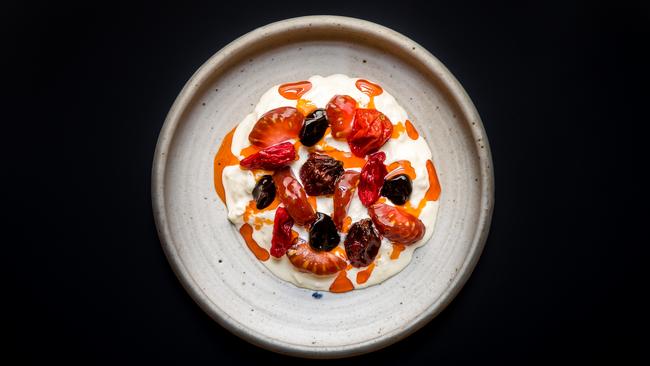
It’s a theme among the Australian contemporaries: Australian chefs are weaned on diverse styles, flavours and ingredients as par for the course.
“The ingredients available is what is really going to differentiate the two from one another over time,” Wells says. “Almost every day we have suppliers bring us samples of things Joeri (Timmermans, Blackwattle’s Australian head chef) and I haven’t used before, so it’s like a breath of fresh air in our creative process.
“As a cook, it’s easy to feel like you are painting with the same colours all the time, so what we learn in Singapore will probably actually influence what we do at Automata in a positive way.”
Wells believes an influx of expats to Singapore over the past 10 years has meant a growing appetite for a range of different cuisines. Locals and expats eat out most nights, he says.
“I think both the locals and international diners are tiring of expensive meals and the stuffy atmosphere that often comes with them.”
Getting a Michelin star in 2017, in just their second year, was a huge surprise for two more Loh proteges, Sri Lanka-born Australian chef Naleendra and his wife, Manuela Toniolo, who opened the very impressive Cheek by Jowl in February 2016.
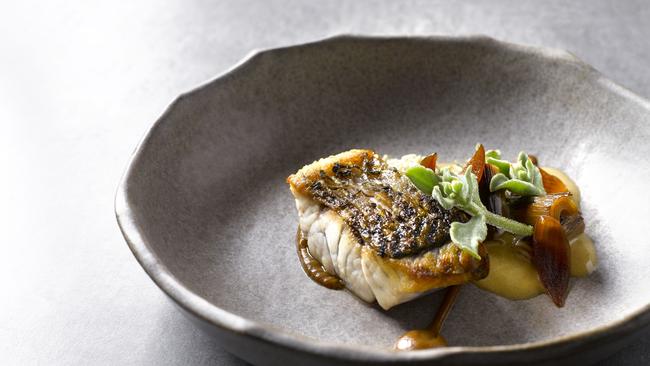
After both working at significant Australian restaurants, but under the cloak of relative anonymity (Naleendra was pastry chef at Sydney’s Yellow, for example) they moved to Singapore to broaden their experience. Nearly two years into their venture with Loh, who spotted their potential while working at the duo’s combination of freestyle food, an open mind on wine and breezy hospitality epitomises the Australian contemporary movement.
“Australian restaurants have their own culture and style,” says Toniolo, who grew up in Victoria with an Italian father and German mother. “We have guests come in and they tell us the restaurant very much feels like a restaurant you would visit back home … we always wanted our place to feel warm, friendly, welcoming but still having that professionalism to it. This is what restaurants in Australia are great at providing.”
As restaurant manager, this is Toniolo’s domain, although the head chef’s broad smile from the open kitchen/dining bar helps the cause.
“We are very lucky in Australia that the service industry is thought of as a career.”
This, many restaurateurs tell The Australian, is not the case in Singapore.
“Would this have happened back home? I’d like to say yes, I just don’t believe it would have happened yet,” she says of the duo’s success.
“The exposure we receive here is very different to what it would have been had we stayed in Australia. Because Singapore is a global hub we get recognition on a global scale. (Obviously) we would never been able to get our Michelin star back home.”
She says creating something many Singaporeans can easily relate to has been a huge bonus “because a huge number of Singaporeans travel to Australia for holiday or to study, especially people who have lived there a few years and come home to Singapore. They come to places like ours to get their Australian fix.”
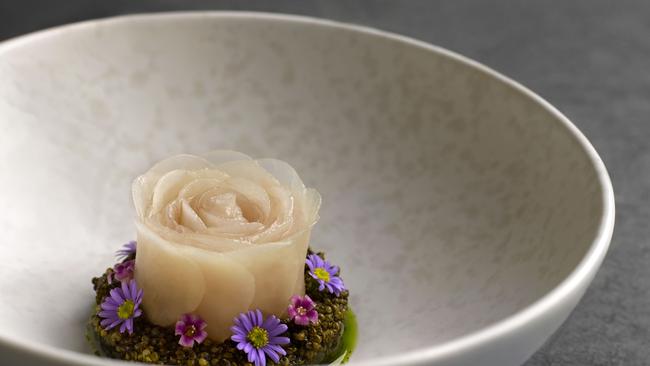
And if the Cheek fix is akin to a mod Sydney bistro, the one-Michelin-star Whitegrass experience is more like dinner at Quay, minus the views. In partnership with another of Singapore’s power restaurant groups — Lo & Behold, also an operator, with chef Julien Royer, of the superb fine diner Odette — Proserpine-raised Sam Aisbett and his wife, Annette Glover, present Singaporeans with the slickest face of the Australian contemporary scene.
Indeed, anyone who appreciates Peter Gilmore’s food at Quay will find themselves muttering similar praise for Aisbett’s exceptional, seafood-biased modern cuisine at Whitegrass.
He was, after all, head chef at Quay for three years and at Tetsuya’s before that.
“I don’t mind getting labelled Australian contemporary,” says the chef. “We are so lucky in Australia to grow up with so many cultures and different types of cuisines. Aussies are so creative, we experiment, we are open to new things, we can cook all types of cuisines and our food is always evolving. We have no boundaries.
“I guess this is what the Australian contemporary tag is, to me anyway.
“As Aussies, we are brought up eating Asian food, it’s natural for us. We get the flavours. So it comes naturally to use similar flavours and textures in our cooking.”
But he emphasises it’s the whole package.
“It’s the friendly service that Aussies just get how to do. It’s creating a comfortable dining experience that is professional but not stuffy. I think they like that we have buoyant, real personalities. Always friendly.
“And that we will go above and beyond to make sure everyone has an amazing experience.
“I guess this is what the Australian contemporary tag is, to me anyway.”
John Lethlean visited Singapore as a guest of Singapore Tourism. visitsingapore.com/SGxAUFoodies
-
The incubator
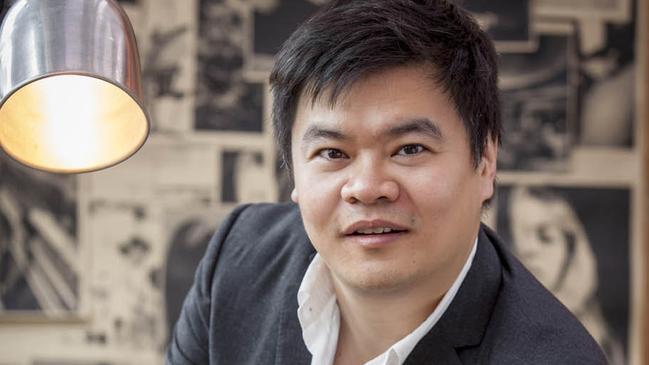
The public face of the Unlisted Collection, a man who has largely made the phenomenon of Australian contemporary happen, is Singaporean businessman Peng Loh. His restaurant group numbers 16 in Singapore, with two more in Sydney running parallel with his Chatswood boutique hotel The Old Clare, another in Shanghai and still more in London.
An entrepreneur with seemingly unbridled zeal for partnering with, and enabling, chefs, Loh is a one-man business incubator with a passion for Oz. Blackwattle, Burnt Ends and Cheek by Jowl are all Unlisted restaurants.
“I think that Australian chefs instinctively know the Asian palate well,” he says.
“They grew up around Asian food and eating excellent Thai, Chinese, Indian, Korean cuisine on an almost weekly basis. This is the big advantage Australian chefs have. Your cuisine is varied and imaginative from the ground up. Chefs growing up in France, Italy, Belgium, the UK, they simply do not have the same opportunity to educate their palates in the same way … So when they eventually cook in Asian countries they do so well.”
So what is it about the Australian contemporary style that Singaporeans respond to?
“To me,” he says “it’s all about the originality of the cooking. The food is simultaneously simple yet sophisticated. You have high quality cooking and ingredients but minus all the fuss that you get in European-style restaurants. I personally love it too.
“In my opinion, and I can tell you there is definitely no broad agreement on what contemporary Australian cuisine is, it encompasses sophisticated cooking techniques and high quality produce made into simple-looking dishes that might have no more than three or four components on a plate, almost always served quite naturally in a relaxed and casual restaurant
“The dish often belies the time and effort taken to produce it.”
-
Australian contemporary: The Singapore players
Burnt Ends
Co-owned by Australian chef Dave Pynt, with Australian head chef Jake Kellie on duty daily, this fire-burning restaurant has paved the way for Aussie restaurant style in Singapore since 2013. So much more than barbecue, Burnt nevertheless is characterised by simple food prepared with the abundant help of glowing embers. A monty to make the World’s 50 Best list in 2018.
burntends.com.sg
Cheek By Jowl
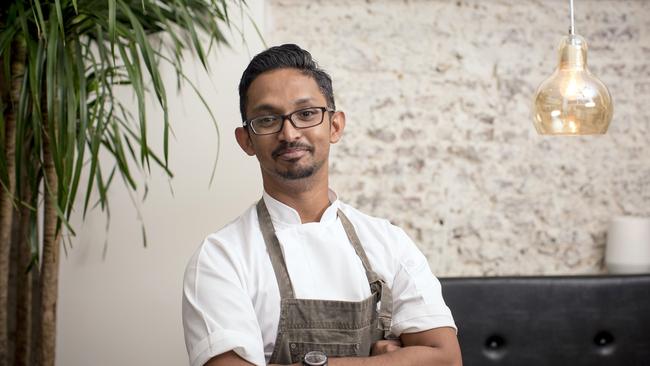
Sri Lankan by birth, Australian by citizenship, Rishi Naleendra came to Australia to study architecture. He decided serious food was a better option and Singapore a world of possibility, and this restaurant, in partnership with his wife, Manuela Toniolo, in the quaint neighbourhood of Telok Ayer is proof: unpredictable, fun and with each dish bursting with flavour. Naleendra’s cuisine reflects an eclectic career in classic Aussie fashion.
cheekbyjowl.com.sg
Blackwattle
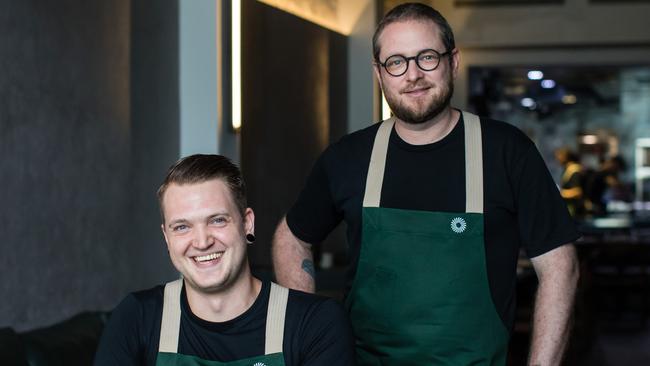
This is a simple equation: if you’re a fan of Chippendale’s Automata, helmed by Clayton Wells, you’ll gravitate to the still-new Blackwattle. Easily. Plenty of new-thinking wine, dishes of few elements but much power, like the signature mussels with preserved lemon, black garlic and stracciatella. Fun yet refined. And expect big things from Australian head chef Joeri Timmermans.
blackwattle.com.sg
Whitegrass
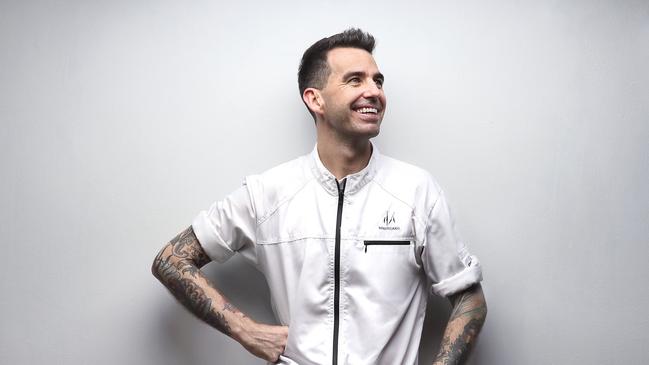
A period dining space that makes a fine backdrop to Sam Aisbett’s sublime cooking, Whitegrass might come over all gastro-templish if not for the light hand of manager and partner Annette Glover. What a team. Think Quay. Think Sepia. Now think of a chef using a world of ingredients on the Singaporean doorstep to do something similar, but individual. Very special.
whitegrass.com.sg
